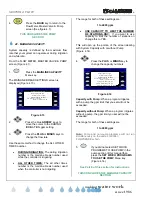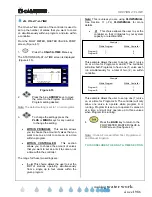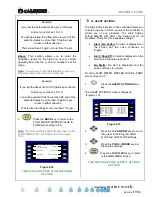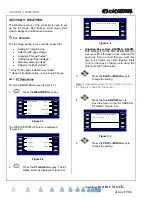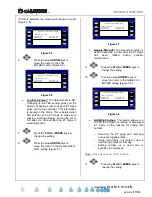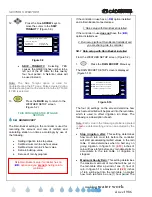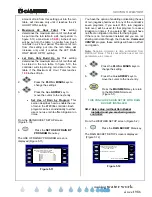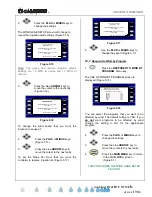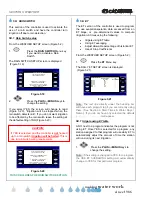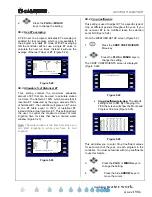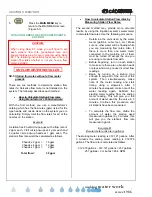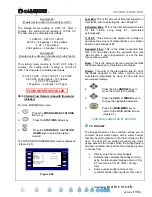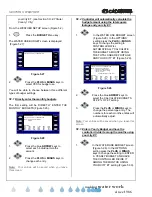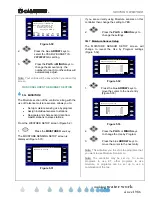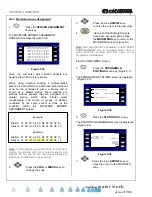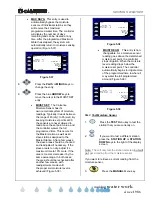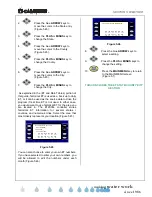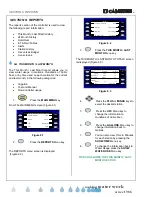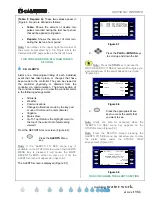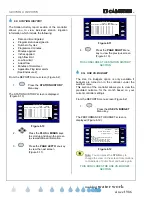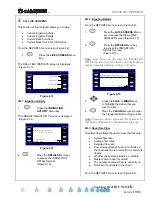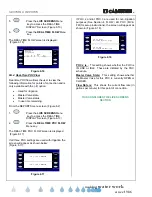
SECTION 5: WEATHER
®
making
since 1986
water work
5.
Press the
MAIN MENU
key to
return to the MAIN MENU screen
(Figure 5.1).
THIS CONCLUDES THE CROP COEFFICIENTS
SECTION
CAUTION:
When using Daily ET mode you will have to set
each stations flow rate, precipitation rate, and
square footage area for every program using Daily
ET. The following instructions cover how to set up
station flow rates whether or not you have a flow
meter installed.
NO FLOW METER INSTALLED
D
5E.5 Station flow rates without a flow meter
present:
There are two methods to determine station flow
rates if a Calsense flow meter is not installed on the
system. The following describes each method
•
How to Calculate Station Flow rates
Using Manufacturer’s Published data:
With the first method, you use a manufacturer’s
catalog which has the flow rates (gpm) listed for the
type heads, and nozzle sizes on the system you are
calculating. Simply total the flow rates for all of the
nozzles on the station.
Example:
A station has 8 half-circle pop-ups with a flow rate of
2 gpm each, 3 full circle pop-ups at 4 gpm each and
4 quarter circle pop-up heads at 1 gpm each. The
station’s flow rate would be calculated as follows.
8 heads x 2 gpm = 16 gpm
3 heads x 4 gpm = 12 gpm
2 heads x 1 gpm = 2 gpm
Total flow
= 30 gpm
•
How to calculate Station Flow rates by
Measuring Station Flow Rates:
The second method may provide more accurate
results, by using the irrigation system’s water meter
to calculate flow rates. Use the following procedure:
o
Determine the units used by the water
meter (gallons, cubic feet, etc.) Make
sure no other water will be flowing while
you are measuring flow rates. Also, if
there is more than one water meter
connected to the mainline, all of them
must be turned off except the one you
are using to measure flow with.
o
Before beginning, turn on each station
to make sure there are no broken heads
or pipes which may cause incorrect flow
readings.
o
Begin by turning on a station long
enough to purge all of the air out of the
system. Then simultaneously, make
note of the meter reading and start
timing using a stopwatch. After 3
minutes have elapsed, make note of the
water reading again. Subtract the
starting meter reading from the ending
meter reading. This will give you the
amount of water used by the valve in 3
minutes. Continue this procedure until
all stations have been measured.
o
To calculate the flow rate, divide the
amount of water the station used
(measured in gallons) by 3 minutes, this
will give you the station’s flow rate
measured in gpm’s.
Example #1
(if water meter units are in gallons):
The starting meter reading is 312,121 gallons. After
3 minutes the ending meter reading is 312,378
gallons. The flow rate is calculated as follows:
312,378 gallons – 312,121 gallons = 257 gallons
257 gallons ÷ 3 minutes = 85.6 GPM



